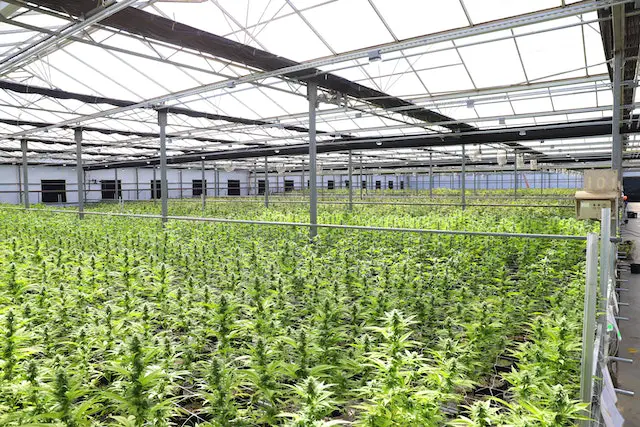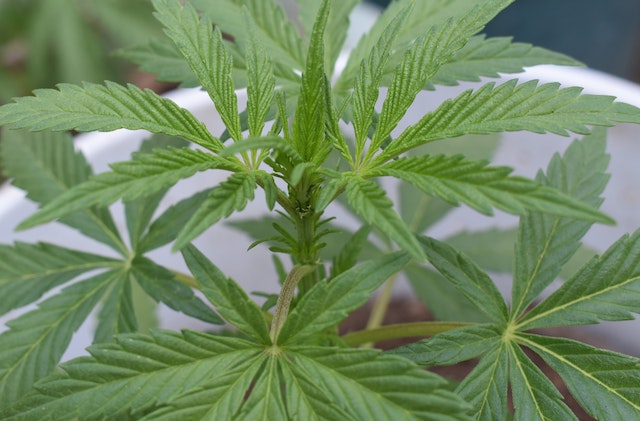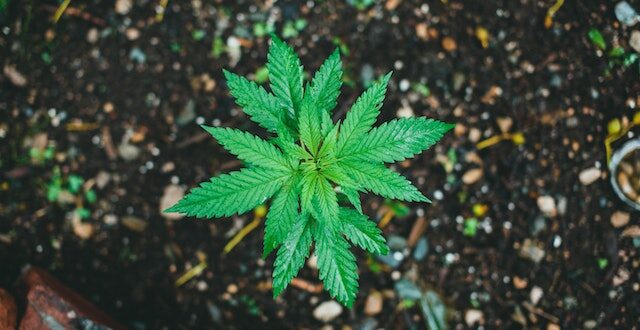Since cannabis is an annual plant, its entire lifecycle occurs within a single calendar year, with most cultivars blooming between four and ten months after they are first planted. Cannabis goes through some stages in its development. The most critical phases are germination, seedling, growth, and flowering; each level presents its own challenges. Beginner growers must know such facts to ensure their plants receive due care and attention.
Growers should always know their plants’ present growth stage. Not only does the plant’s physical appearance vary throughout time, but so do its cultivation requirements. The recommended amounts of light, water, and nutrients vary according to the stage. In addition, knowing what stage the plant has reached will help you decide whether to prune it or ascertain its sex. Read on to understand more about marijuana’s growth cycle.
The Germination Stage
The life of a marijuana plant starts immediately after the seed is sown into the ground. The single most crucial element in this life cycle is high-quality seed. Healthy cannabis seeds should be firm, dry, and brownish. The germination process starts when the taproot is formed as the germ in the seed bursts through its shell. Germination takes from 24 hours to 7 days, depending on several factors, such as seed type and growing conditions. After the roots shoot, the germinated seed should be gently placed in the growth media, where the plant will begin to develop and push upwards. The plant then sheds its protective seed shell while the first two cotyledons (seed leaves) form, which marks the end of the germination stage.
There are several methods for getting the seeds to germinate. To start the journey, you can use paper towels, soil, or water as germination media. Alternatively, you can use cannabis clones transplanted to the final growing medium, though this method is recommended only for experienced growers. Let us explore how to start the germination process in each growth medium.

Paper Towel Method
Moisture is the most critical element your seeds require during germination. Spread the seeds out on a paper towel. Paper towels serve their purpose since they are thick and retain moisture. Place the paper towel with a few seeds under running water and let it soak up the moisture until completely saturated. Afterward, place the moist paper towel in a small plastic container and keep it between 70 and 85 degrees Fahrenheit since seeds require a warm environment to sprout. Check your seeds daily until you see seedlings emerge. This could take 3 to 10 days, so be patient.
Soil Method
The most organic approach for propagating cannabis seeds is in soil, which is also the easiest because of its high moisture content. Soil also includes nutrients and bacteria that aid plant development. The ideal substrate for cultivation is potting soil because of its capacity to keep a stable temperature. Here are a few simple steps to germinate marijuana seeds in soil:
- Get the soil ready for germination. Choose a small, well-draining pot or container and fill it with soil. You can make a half-and-half mixture of native clay and gritty sand. Never use fine sand since it can turn into concrete when wet.
- Wet the soil and sprinkle the seeds on top. Cover the marijuana seed with soil and gently crush it to stimulate rapid growth.
- Protect the soil. Cover the seeds with translucent plastic to make it easier to observe if the soil is still damp. Airflow is vital at this stage, so make small holes in the plastic.
- Place the container in a temperature-controlled environment. Temperatures ranging from 70°F to 90°F (21°C to 32°C) are required for seed germination. Once seedlings appear, gradually remove the plastic to allow your marijuana plants to air. The sprouting seeds can then be planted in their final growing medium.
Be careful not to overwater your soil since this can stunt seed growth and kill some.
Water Method
Seeds can also be germinated in water. Water is a great growth medium because it promotes cell division. At this point, the seeds begin to take up the water in their surroundings, which eventually causes the cannabis plant to grow. Here is how to grow cannabis seeds in water:
- Fill a glass halfway with water and add your seeds.
- Place the glass of water with seeds in a dark place with temperatures ranging from 68°F to 77°F (20°C to 25°C).
- Allow the roots to grow to a length of 2-3 mm.
- Transfer the young seedlings to the container or soil where the cannabis plants will be grown.

The Seedling Stage
In cannabis, the seedling stage occurs immediately after the seeds germinate. A typical marijuana seedling should have green leaves with a single ridged blade during the growing period. To safeguard the delicate stems while they are still sprouting, you should water them less intensely. Furthermore, mold and disease development risk is higher during the seedling stage.
It is recommended that you water your seedlings every two days. Overwatering saplings is a typical mistake many growers make, which may hinder the time it takes for your weed to grow and mature. In addition, the seedling should be housed in a place with good air and light circulation. This allows chlorophyll and essential cannabinoids to develop.
The seedling stage should take two to three weeks if the appropriate conditions are maintained. Most significantly, the saplings should be exposed to a light source for at least 18 hours daily. Sunlight is the most prevalent light source for cannabis seedlings. However, technological advancement has resulted in the development of LED lights with the same light characteristics as sunshine, which is ideal for indoor growing setups.
The Vegetative Stage
The vegetative stage is when the marijuana plant begins to mature. Fuller leaves and stronger stalks characterize this phase. The plant’s development pace also accelerates, giving it a bushy appearance. During the vegetative phase, moving the plant to a location where it will reach full growth is best. Furthermore, the watering schedule should be altered. Growers should pour the water further away from the stem to avoid exposing the roots. The stage lasts three to sixteen weeks and requires around 18 hours of light.
The Flowering Stage
Buds begin to form on the cannabis plant during the flowering period. This is the phase when the plant’s sex begins to emerge. Once the male components have been determined, growers remove them from the growing room to prevent pollination. It is also best to avoid cutting leaves and branches two weeks before the marijuana plant begins to flower. During this time, the plant should be watered less frequently and exposed to less light. It’s optimal to shift to a schedule of 12 hours of sunshine daily. Less light exposure allows the plant’s cannabinoid levels to increase. The entire stage takes approximately 1-4 months, depending on the cannabis strain.
Some growers utilize specific fertilizers during this period to boost bud production. Cannabis plants require lots of water during their blooming season, and it might be necessary to stake them to sustain the buds’ weight. Pruning should be avoided after the second week of flowering to avoid interrupting hormone development. From this stage, your cannabis plant is ready for harvesting, and you can finally enjoy your labor’s fruits (dense, flavorful, and THC-rich buds).
Conclusion
Once you comprehend the cannabis developmental process and the recommended steps and requirements for each stage, you’ll be able to care for your plants properly. You’ll be a better marijuana farmer with top-tier produce to show for it. We have compiled all the information you need to become a better ganja grower at askgrowers.com, which is accessible for free.
 khamush.com Lifestyle | Motivation | Poems
khamush.com Lifestyle | Motivation | Poems



